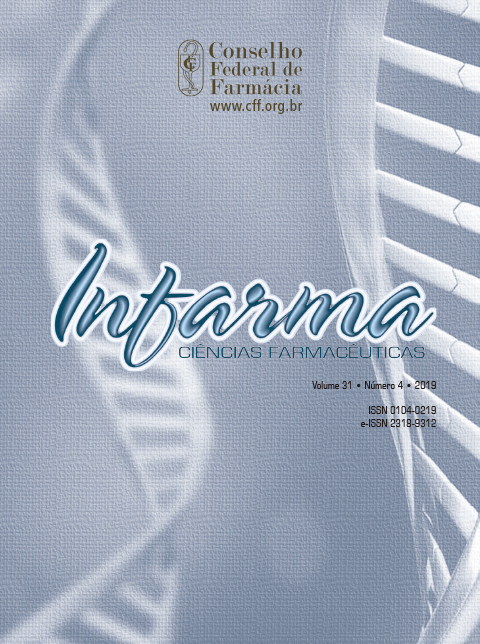PREVALÊNCIA DE ENTEROPARASITOSE E SUA ASSOCIAÇÃO COM PERFIL HEMATOLÓGICO E BIOQUÍMICO EM ADULTOS EM CAMETÁ, PARÁ, BRASIL
DOI:
https://doi.org/10.14450/2318-9312.v31.e4.a2019.pp293-304Palavras-chave:
enteroparasitoses, perfil hematológico, perfil bioquímicoResumo
A prevalência de enteroparasitose e sua associação com perfil hematológico e bioquímico, em adultos de ambos os gêneros, na faixa etária 18 e 65 anos, residentes na cidade de Cametá, Brasil, foi avaliada, por meio de um estudo prospectivo, quantitativo e transversal. Foram coletadas amostras de 76 individuos para exames parasitológicos, hemogramas e bioquímicos. Em 18 amostras (23,68% dos participantes) não foi detectada qualquer infecção por enteroparasita e 58 (76,31%) apresentaram helmintos e/ou protozoários. Quanto às alterações hematológicas, houve uma leve diminuição nos níveis de hemoglobina, hematócrito, VCM, HCM e aumento de leucócitos e segmentados, porém não significativos quando correlacionados com a presença dos parasitas. No que se refere aos parâmetros bioquímicos, não houve diferenças significativas entre o grupo controle (n=18) e os participantes positivos (n=58) do estudo. Entretanto, foi observado um aumento significativo nos níveis de triglicerídeos, colesterol total e fração LDL (p<0,0001) dos participantes positivos em relação aos negativos. Das 58 amostras positivas, 40 estavam infectadas por apenas um enteroparasita e 18 por dois ou mais parasitas. Independentemente do número, apenas alterações bioquímicas foram observadas, sugerindo que o parasita utiliza as lipoproteínas plasmáticas do hospedeiro como veículos lipídicos, para promover uma resposta de fase aguda.
Downloads
Publicado
Como Citar
Edição
Seção
Licença
Autores que publicam nesta revista concordam com os seguintes termos:- Autores mantém os direitos autorais e concedem à revista o direito de primeira publicação, com o trabalho simultaneamente licenciado sob a Licença Creative Commons by NC ND que permite o compartilhamento do trabalho com reconhecimento da autoria e publicação inicial nesta revista.
- Autores têm autorização para assumir contratos adicionais separadamente, para distribuição não-exclusiva da versão do trabalho publicada nesta revista (ex.: publicar em repositório institucional ou como capítulo de livro), com reconhecimento de autoria e publicação inicial nesta revista.
- Autores têm permissão e são estimulados a publicar e distribuir seu trabalho online (ex.: em repositórios institucionais ou na sua página pessoal) a qualquer ponto antes ou durante o processo editorial, já que isso pode gerar alterações produtivas, bem como aumentar o impacto e a citação do trabalho publicado (Veja O Efeito do Acesso Livre).


